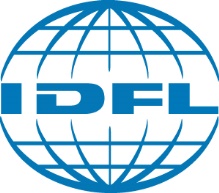Responsible Mohair Standard (RMS)
The domestication of animals to use their fur as a resource has been happening for thousands of years. The Angora goat is one of the oldest of these animals with a history that dates back centuries. Materials and fabrics that were made of mohair (products made from Angora goat fur) were known in England as early as the 8th century.
Mohair is unique among fibers harvested from animals and different from wool and Alpaca due to its high luster and sheen. It is often woven into other fabrics to transfer these qualities over. It is naturally elastic, easily dyed, flame and crease-resistant, moisture-wicking, and highly durable. Understandably, the demand for this type of material is high.
When the demand for materiel is high, there is more pressure to ensure the treatment of the animals, the workforce, and the land is responsible and ethical. That is why Textile Exchange developed the Responsible Mohair Standard.
What is the Responsible Mohair Standard?
The Responsible Mohair Standard was developed to create an internationally-recognized and certifiable standard that set the bar for the industry, farmers, and manufacturers that deal in mohair products and materials.
It is a voluntary standard, adopted to ensure that all parts of the supply chain that deal with mohair are using responsible and sustainable practices. Through certification, companies can use the RMS (Responsible Mohair Standard) logo on their products to communicate their commitment to their values that center around sustainability.
How Do You Qualify for the RMS?
Compliance with all parts of the RMS is necessary throughout the entire supply chain to be certified for the Responsible Mohair Standard. Farmers, producers, spinners, top makers, fabric mills, garment makers, and retailers must meet all the criteria. It is done in this manner to ensure that every facet involved is responsible and ethical.
- Farmers who raise Angora goats and harvest mohair need to comply with the Five Freedoms of animal welfare as well as manage their land responsibly and sustainably. Pesticides, water usage, fertilizers, and more all fall under the scope of the RMS.
- Spinners, top-makers, garment manufacturers, traders, and any other sourcing agents must also meet RMS standards. These include child welfare, workers’ rights to collective bargaining, safe working conditions, and fair pay, among others.
Who Awards the RMS Certification?
Third-party certification bodies do the audits and inspections which lead to certification. These are done at every point in the supply chain. As the certification is voluntary, the responsibility falls upon the company that wants the certification to reach out to one of these professional certification groups to begin the process. Textile Exchange owns and operates the standard itself.
The Content Claim Standard is how all aspects of the supply chain are measured. It is the foundation of all Textile Exchange standards and it verifies and maintains the claimed materials through the entire supply chain to the end product.
Who Benefits from the RMS?
Companies, suppliers, and producers of mohair all benefit from the Responsible Mohair Standard by clearly identifying and communicating the standard of their product with an internationally recognized certification. This can open opportunities to new markets as well as reinforce brand loyalty through responsible and ethical material sourcing.
How Can You Be Certified in the Responsible Mohair Standard?
IDFL is a leader in the certification of products and materials, including the Responsible Mohair Standard. Reach out to IDFL today at audits@idfl.com and see how IDFL audits can lead to you earning the Responsible Mohair Standard certification.

